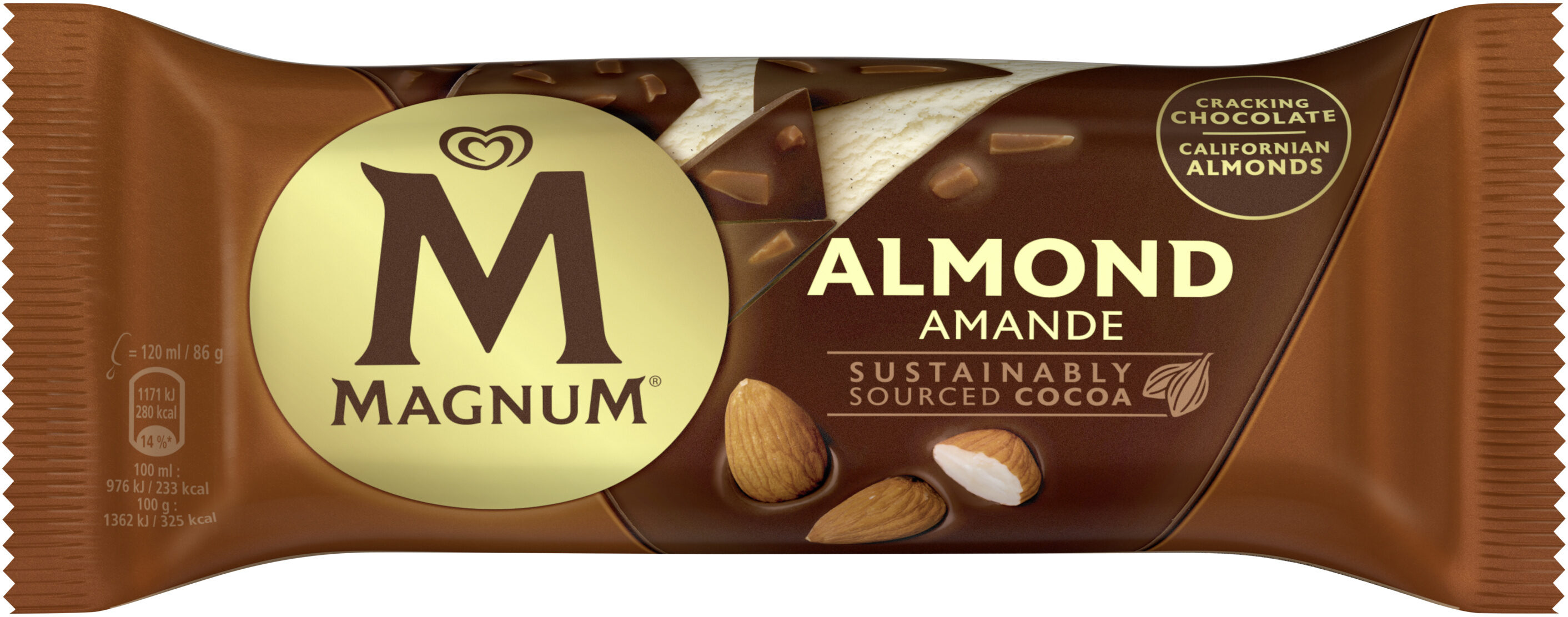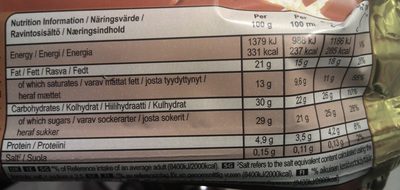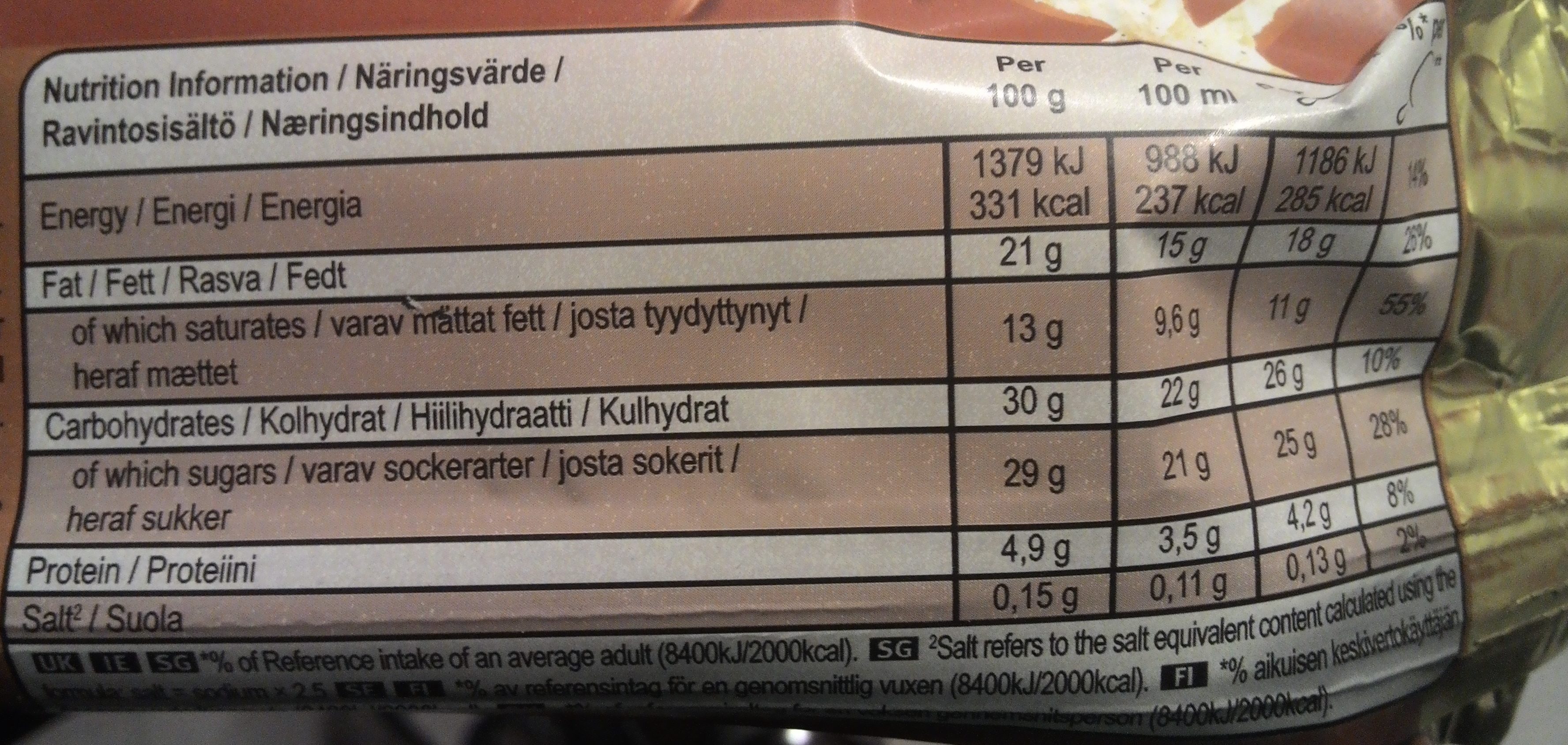Magnum Ice Cream Lolly ALMOND 120 ML - 86 g
This product page is not complete. You can help to complete it by editing it and adding more data from the photos we have, or by taking more photos using the app for Android or iPhone/iPad. Thank you!
×
Some of the data for this product has been provided directly by the manufacturer Unilever France.
Streckkod: 8000920500224 (EAN / EAN-13)
Vanligt namn: Vaniljglass med mjölkchoklad (28%) och mandelbitar (5%)
Kvantitet: 86 g
Förpackning: en:multilayer-composite, Film, 81 C/X
Kategorier: Snacks, Efterrätter, Söta snacks, Konfekt, Fryst mat, Frysta efterrätter, Glass och sorbet, Glass, en:Ice cream bars
Etiketter, certifieringar, utmärkelser:
Glutenfri, en:Green Dot, en:Rainforest Alliance, Rainforest Alliance Cocoa, Triman, it:Bezglutenowy


Origin of the product and/or its ingredients: France
Länk till produktsidan på producentens officiella webbplats: https://www.magnumicecream.com/de/produk...
Butiker: EDEKA
Länder där såld: Österrike, Belgien, Frankrike, Tyskland, Guadeloupe, Italien, Singapore, Spanien, Sverige, Schweiz
Matching with your preferences
Miljö
Carbon footprint
Förpackning
Transportation
Etiketter
Övrig information
Conservation conditions: À conserver à -18°C.
Kundservice: Magnum Relation Consommateurs, Unilever France, 20 rue des Deux Gares 92842 Rueil-Malmaison Cedex
Report a problem
Datakällor
The manufacturer Unilever France uses Equadis to automatically transmit data and photos for its products.
Produkt tillagd den av openfoodfacts-contributors
Senast ändrad produktsida på av foodless.
Produktsida också redigerad av 5m4u9, aleene, date-limite-app, davidepio, fiffi, foodrepo, foodvisor, ibwocoruytrc, ilariapicelli, inf, kiliweb, nicoolas, olofolleola4, openfood-ch-import, org-unilever-france-gms, packbot, predatorix, pyrka, roboto-app, scanbot, segundo, thaialagata, torredibabele, yuka.RnE4OUFJSmNoK1ZSdU1FYjQwM253ODlmMnJuNFlGcXRGcmNPSWc9PQ, yukafix.












